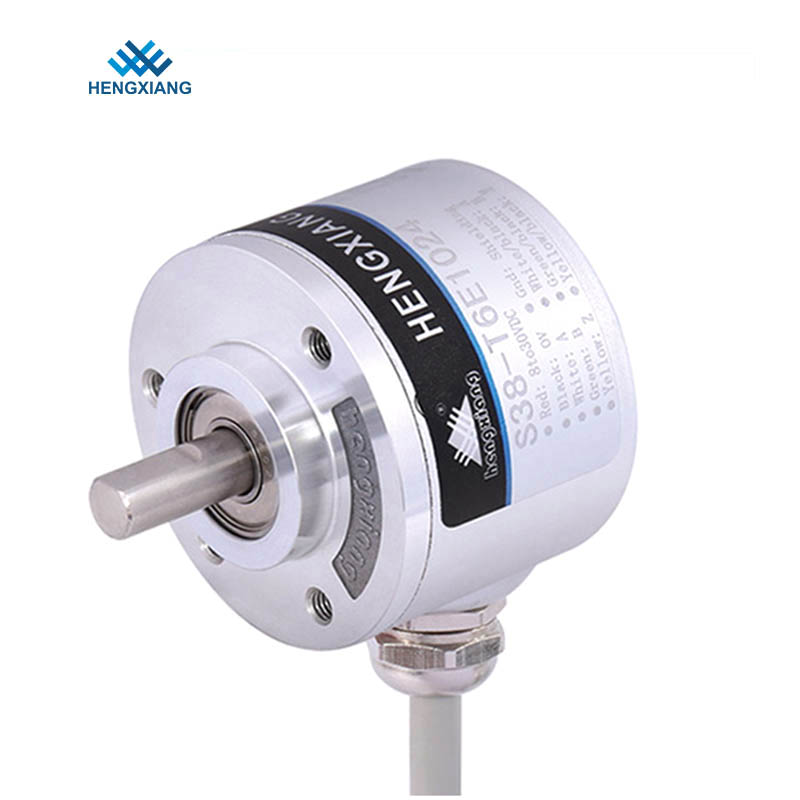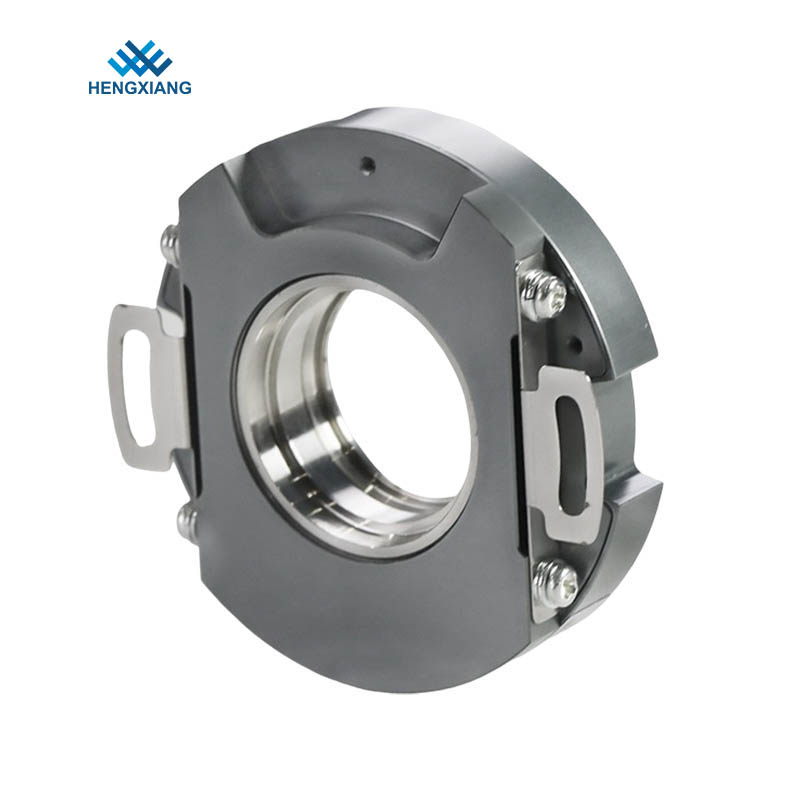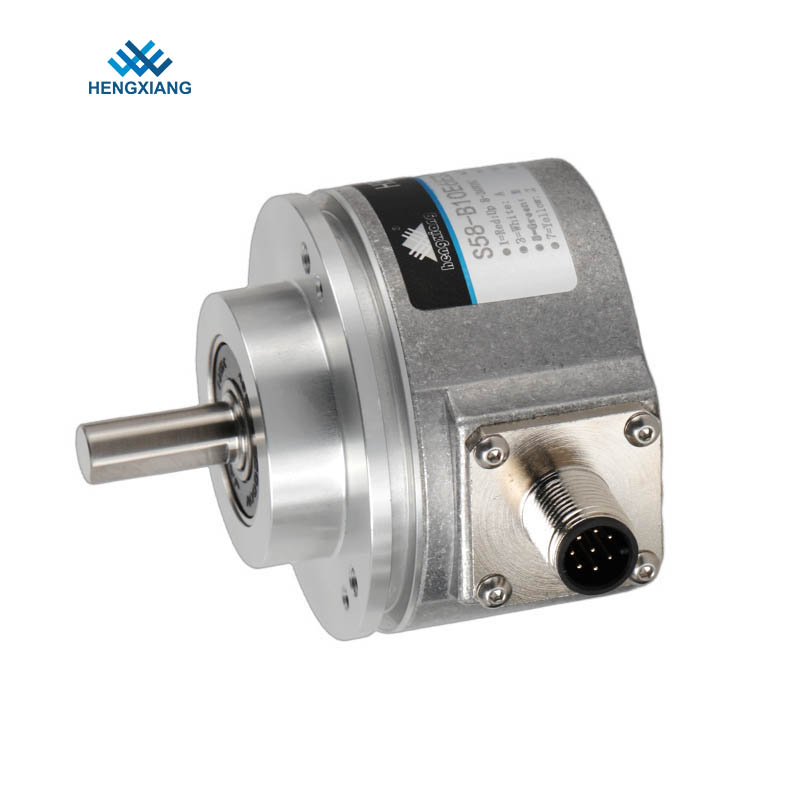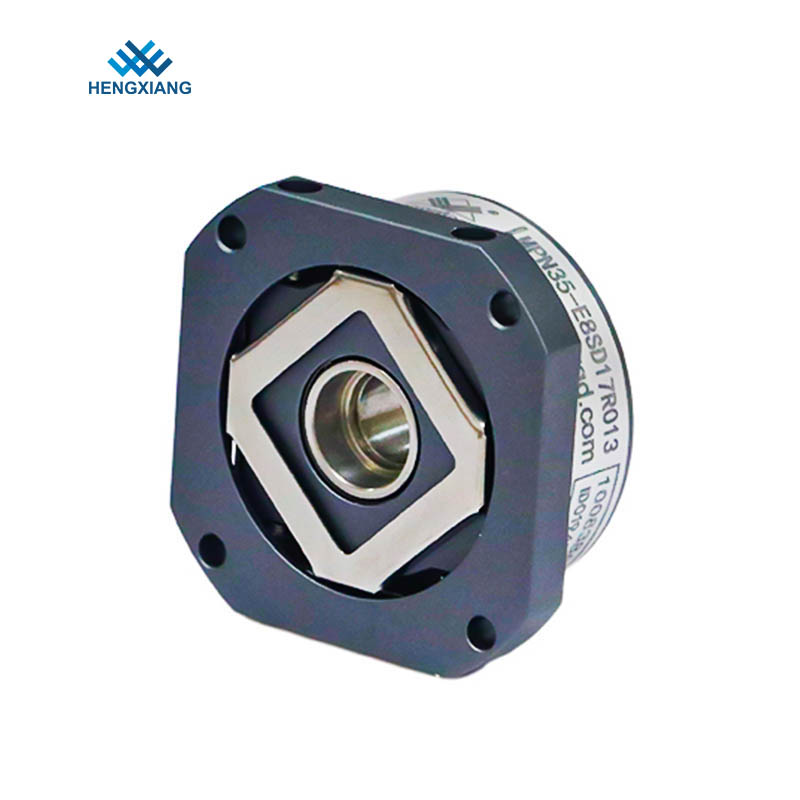How can the performance of a single-turn solid encoder be guaranteed in extreme temperatures?
Release Time : 2025-10-23
Ensuring the performance of a single-turn solid encoder in extreme temperature environments requires a coordinated approach encompassing material selection, structural design, thermal compensation mechanisms, sealing, testing, and environmental adaptability optimization. This ensures stable operation across a wide temperature range of -40°C to +85°C, or even beyond.
Material selection is fundamental to ensuring performance in extreme temperature environments. The housing of a single-turn solid encoder is typically constructed from aerospace-grade aluminum alloy or stainless steel. These materials offer high strength, corrosion resistance, and excellent thermal conductivity, effectively resisting deformation caused by high-temperature expansion or low-temperature contraction. Internal rotating components are often constructed from 440C stainless steel. After vacuum quenching and cryogenic treatment, the resulting high Rockwell hardness ensures dimensional stability at high speeds. The encoder disc is constructed from ultra-clear glass or specialized engineering plastics, whose linear expansion coefficient matches that of the metal components, minimizing positioning errors caused by temperature fluctuations.
The structural design must balance mechanical strength with thermal stress distribution. The housing of a single-turn solid encoder features an all-metal, precision-machined, integrated design. The surface is anodized or plated to create a protective layer for improved wear and weather resistance. Key internal components are filled with special silicone or phase-change materials to withstand high-intensity mechanical shock and wide-band vibration, while also isolating heat conduction in high-temperature environments. The shaft design utilizes an ultra-precision bearing system, coupled with a safety lock structure and reinforced shaft seals, ensuring sub-arc-second positioning accuracy even in extreme temperatures and preventing shaft binding caused by thermal expansion and contraction.
The thermal compensation mechanism is a key component in addressing temperature fluctuations. The single-turn solid encoder's internal electronics monitor the ambient temperature in real time using a temperature sensor. Using an algorithmic model, the encoder dynamically adjusts signal output parameters to compensate for resistance drift or capacitance changes caused by temperature fluctuations. The signal generator module utilizes a multilayer ceramic substrate and low-k dielectric constant material, along with gold-plated contacts and low-temperature-rise electronic components. This significantly reduces electrical contact resistance and effectively suppresses temperature-induced signal jitter. The optical system utilizes matched thermal expansion coefficients to ensure synchronized deformation between the encoder disc and readhead during temperature fluctuations, maintaining high-precision position feedback.
Sealing is crucial for extreme temperature adaptability. Single-turn solid encoders utilize fluororubber or silicone rubber seals at the joints of their housings, maintaining a complete seal even after long-term salt spray testing. They achieve an IP68 or even IP69k rating, offering protection against high-pressure water washdowns, dust intrusion, and condensation. The internal circuitry is treated with triple-proofing, and key components are vacuum-potted or epoxy-coated to isolate moisture and corrosive gases. Furthermore, optimized heat dissipation structures, such as the addition of heat sink fins or thermally conductive silicone pads, accelerate heat dissipation in high-temperature environments and prevent localized overheating.
Testing and verification are crucial for ensuring performance. The laboratory utilizes a constant temperature and humidity test chamber to conduct long-term temperature and humidity cycling tests on single-turn solid encoders, simulating diurnal and seasonal temperature fluctuations. Furthermore, temperature shock tests are conducted, subjecting the encoder to rapid switching between high and low temperatures to verify material properties, structural design, and the stability of electronic components. For example, a single-turn solid encoder from a certain brand has been tested continuously in extreme temperatures ranging from -40°C to +85°C, with position errors far below the standard value and significantly improved anti-interference performance compared to traditional encoders.
Targeted optimization for specific application scenarios further enhances reliability. In high-temperature environments such as metallurgy and petrochemicals, single-turn solid encoders incorporate heat dissipation modules and high-temperature grease to accommodate long-term high-temperature operation. In low-temperature regions like Northeast and Northwest China, low-temperature batteries and anti-condensation circuitry are used to prevent startup difficulties or circuit shorts caused by low temperatures. Encoders used in outdoor equipment must also consider the increase in cavity temperature caused by solar radiation. Optimizing the housing color and reflectivity reduces heat absorption and ensures that the actual operating temperature falls within the designed range.
The performance of single-turn solid encoders in extreme temperatures relies on a deep integration of materials science, thermodynamics, precision manufacturing, and environmental engineering. By selecting heat-resistant materials, optimizing structural design, implementing thermal compensation mechanisms, strengthening sealing processes, and conducting rigorous testing, the encoders are able to operate stably in extreme environments such as high-temperature furnaces, cold mines, and tropical rainforests, providing high-precision position feedback and motion control support for industrial automation, aerospace, energy development, and other fields.







